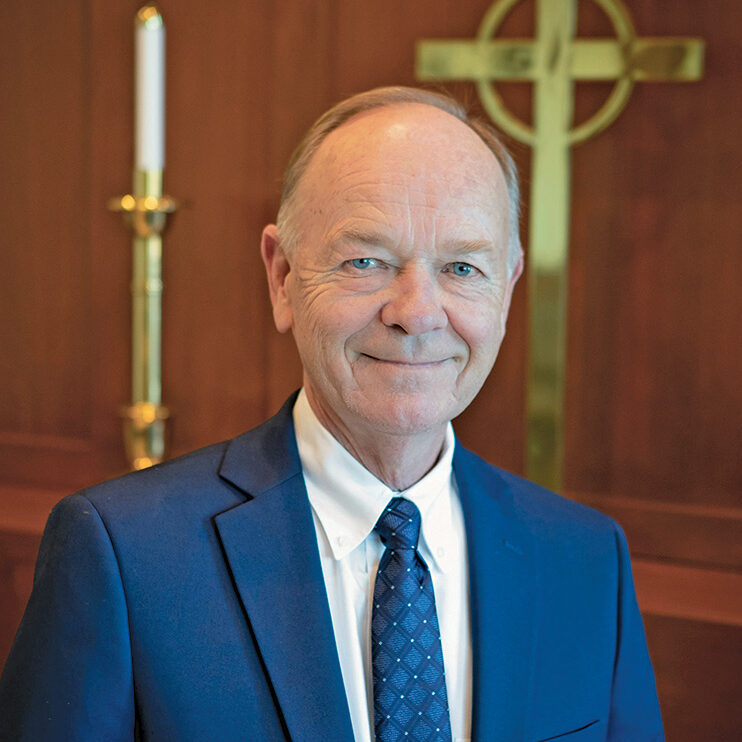 |
 The year was 1872. Lutherans had been in America since before the revolution. At that time, Lutheranism in America could be described as a confusing and jumbled array of dozens of independent state synods and three associations of synods. The division and confusion were the result of differences in history, language, national origin, and the doctrines that were taught.
The year was 1872. Lutherans had been in America since before the revolution. At that time, Lutheranism in America could be described as a confusing and jumbled array of dozens of independent state synods and three associations of synods. The division and confusion were the result of differences in history, language, national origin, and the doctrines that were taught.
Fully two-thirds of the Lutheran synods in America were not solidly Lutheran. Some downplayed the importance of doctrinal differences with other Lutherans and even non-Lutheran church bodies. Others were not willing to subscribe without reservation to the Lutheran Confessions.
But confessional Lutheran synods—those that were solidly committed to the Scriptures and to the doctrines expressed in the Lutheran Confessions—did exist. Founded in 1847, the Missouri Synod had been a genuinely orthodox confessional Lutheran synod from its inception. Others, like the Wisconsin Synod and the Minnesota Synod, had moved decisively from shaky beginnings toward a fully confessional Lutheran stance. By 1872, six synods—Missouri, Wisconsin, Minnesota, Illinois, Ohio, and the Norwegian Synod—recognized the need for mutual support. In order to preserve the truth of God’s Word, it was vitally important for them to unite in a fellowship of Lutheran church bodies that was committed to the teachings of Scripture and to the Lutheran Confessions. Those six synods formed the Synodical Conference in Milwaukee in the summer of 1872.
Sadly, unity in the Synodical Conference did not last long. After only ten years, the Ohio Synod withdrew because of differences regarding the doctrine of election. Later doctrinal disputes would lead the Norwegian Synod to leave the Synodical Conference and join the Norwegian Lutheran Church of America. A small part of the Norwegian Synod, however, refused to go along with that decision. It remained part of the Synodical Conference and, in 1917, formed its own synod called the Norwegian Synod of the Evangelical Lutheran Church. That group of faithful Lutherans later changed its name to the name it has today: the Evangelical Lutheran Synod (ELS).
The Lutheran Church–Missouri Synod (LCMS), the Wisconsin Synod, and the Evangelical Lutheran Synod would remain in fellowship until WELS and the ELS made the painful but necessary decision to end fellowship with the Missouri Synod. After WELS suspended fellowship with the LCMS in 1961 (the ELS had done so a few years earlier), the Synodical Conference was officially dissolved in 1964. But the fellowship between WELS and the ELS has endured.
What this means is that WELS and the ELS have been blessed with 150 years of uninterrupted fellowship. That fellowship is based on a common commitment to the Scriptures and the Lutheran Confessions and a full agreement in doctrine. We express that fellowship by worshiping, communing, and working together to carry out the mission God has given us. There is regular communication between the synods in the areas of home and world missions. Annual meetings take place to discuss doctrinal and practical issues. The synod presidents talk to each other regularly.
This is a relationship that we treasure. The fact that it has been preserved for 150 years is a testimony to the grace of God and the power of his Word. We pray that God will preserve that fellowship long into the future.
![]()
Learn more about an upcoming anniversary service commemorating the formation of the Synodical Conference at wels.net/wels-history.
Author: Mark Schroeder
Volume 109, Number 06
Issue: June 2022
- The mission of WELS schools
- Blessings in tragedy
- Confusion or comfort?
- Never take it for granted
- A season of miracles
- Don’t miss the point
- Another humbling experience
- Our cross and crown
- The public ministry and the divine call
- No fear of bad news
- Big challenge, bigger blessings
- Our worldwide fellowship
- Seize the opportunities
- The Lord takes care of his church
- Savor the rain
- Up close and personal
- It’s never too early
- Thanks for not giving
- Hope for the future
- Our task is not over
- Update on WELS’ effort in Vietnam
- More workers for a bountiful harvest
- 150 years of fellowship
- A unique system of schools
- God’s cure—for everything
- Lenten repentance, Lenten appreciation
- Pray for us
- Plan with wisdom and faith
- Purposeful discussions
- Upholding biblical values
- President’s message: To judge or not to judge
- President’s message: A field ripe for harvest
- President’s message: Thoughts about the new hymnal
- President’s message: Cooperating in externals
- President’s message: Canceling the cancel culture
- President’s message: Making normal a reality
- President’s message: The fields are ripe for harvest
- President’s message: The end of the story
- President’s message: Blessings small and large
- President’s message: Standing on the truth
- President’s message: Peace on earth—but what kind?
- President’s message: Thankful—even now?
- President’s message: More than dollars and numbers
- President’s message: A time for trust
- President’s message: Future unknown, future certain
- President’s message: God’s work does not stop
- President’s message: A lesson to be learned
- President’s message: Having the right tools
- President’s message: What kind of leaders?
- President’s message: What’s love got to do with it?






